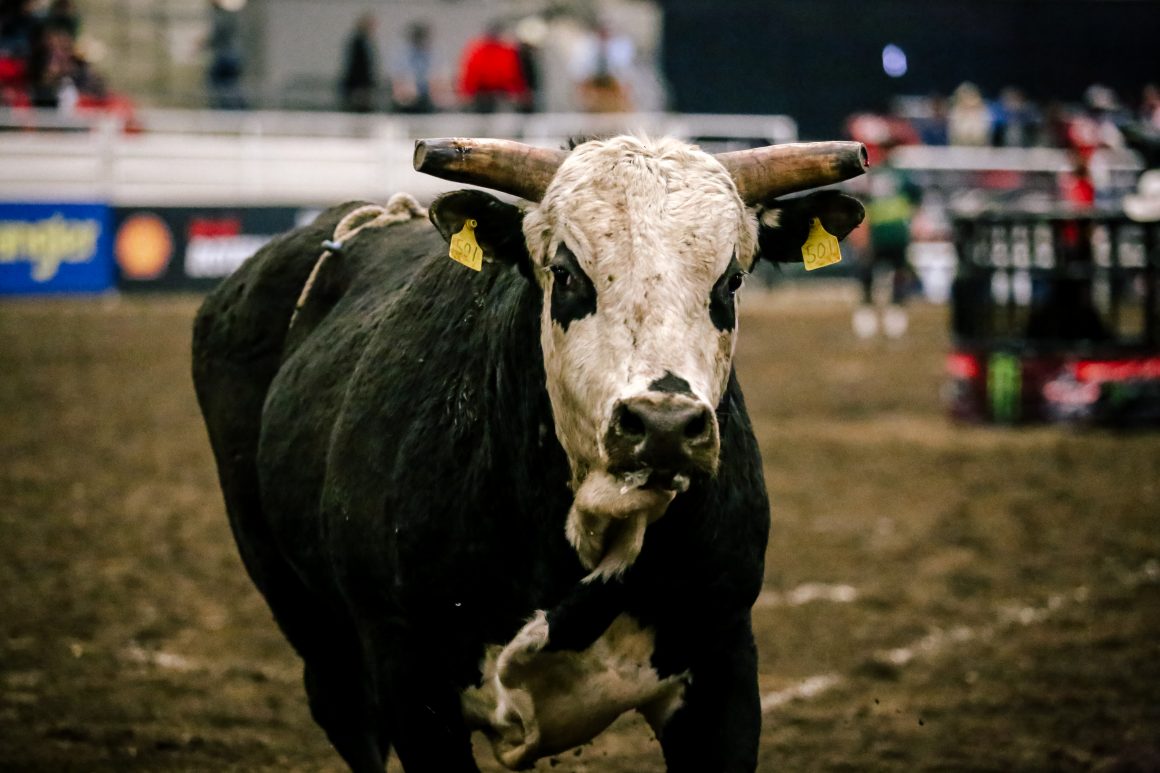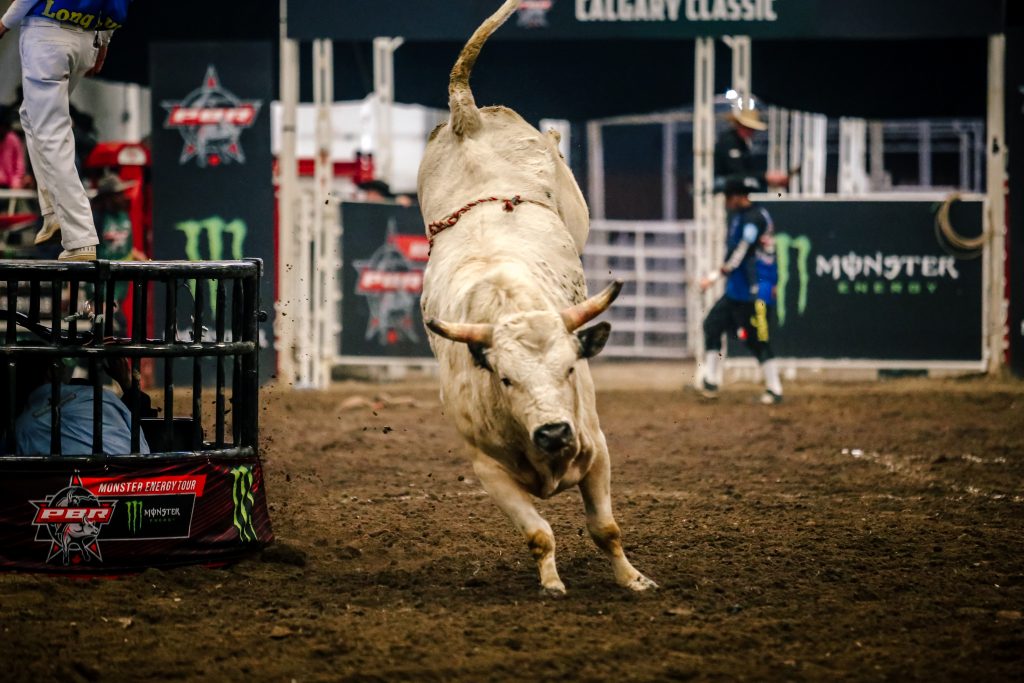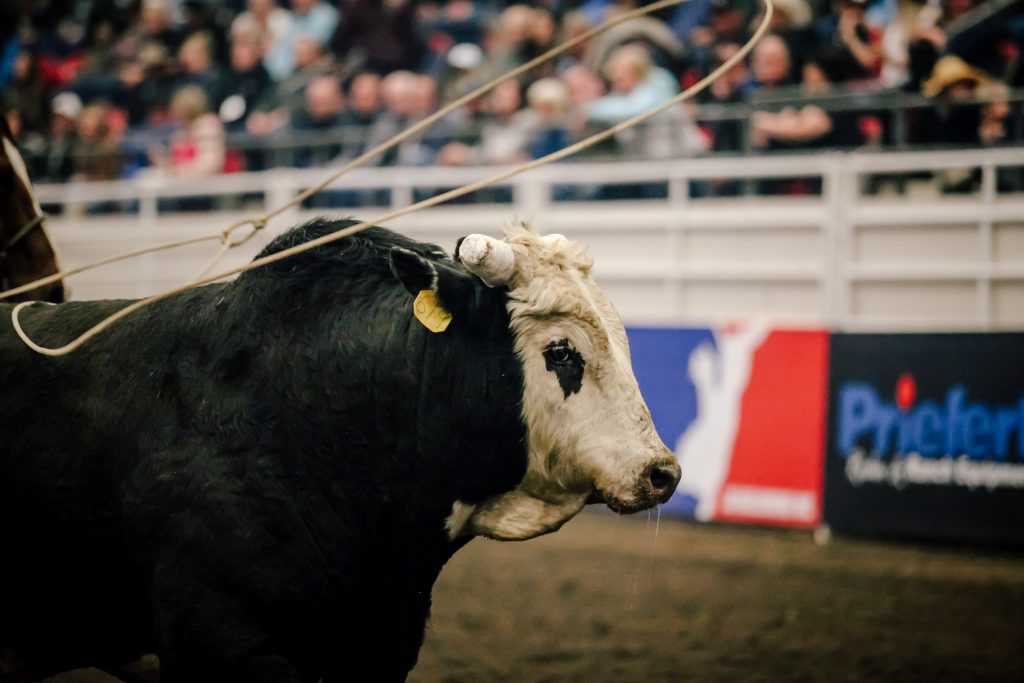
Bulls viewed as athletes in sport of bull riding
By Kristy Koehler, April 5 2019—
In the sport of professional bull riding, the bulls are viewed as athletes in their own right. The Professional Bull Riders (PBR) is an organization devoted to promoting bull riding as a standalone sport. The group recognized the popularity of bull riding during rodeos and believed it could succeed on its own. Now, with more than 300 annual events and several international circuits, bull riding is getting more attention than ever.
The PBR maintains the highest standards of animal welfare and the animals are venerated as athletes. Not only that, but they become part of their owners’ families.
Josh Berezay, proprietor of Two Bit Bucking Bulls, owns Happy Camper, the reigning PBR Canada Bull of the Year. Berezay absolutely views his bulls as athletes and likens them to part of his family.
“It takes two in this sport,” says Berezay. “These bulls, we train them, we exercise them, we give them the best nutrition that we can. I feel that they have to be to a certain level to be here. They have to be bred to do this job and they love it.”
Berezay says he starts training bulls at about three years old. By the time they reach the age of five, they’re in their prime. After they are no longer in their prime, they often get sent down to the minor leagues — a process Berezay says is similar to a National Hockey League player that heads to Europe to join a league if their play isn’t up to NHL standards anymore.
“We’ll send them to an amateur association when they’re not quite to the level here so as to extend their life and their athletic career,” said Berezay. “It happens to athletes, too.”
When their athletic career is entirely over, the bulls get to enjoy their retirement.
“We’ve got bulls at home that we’ve retired that have been superstars for us and they’re just part of our family,” he said. “They have a great retirement and get to hang out with the ladies.”
Berezay says on any given night, when he’s watching his bulls perform, he hopes they do their best, don’t get hurt and don’t hurt a rider. He is inclined to cheer for his bull over the rider.
“I’m always cheering for him,” he said. “But if they ride him, I want it to be for a big score.”
Both athletes — bull and rider — are scored out of 50 points each for a total of 100 available points per ride. Judges score bulls on degree of difficulty — speed, power and kicking ability — and riders, if they manage to stay on for eight seconds, on their control of the bull and body position throughout the ride.
Berezay would love nothing more than to change the minds of people who believe bull riding is cruel.
“I just think they should come and spend a day at our ranch and see how my kids and my wife and myself treat these animals to get them to this level,” he said.

Animal welfare of the utmost importance
There are disgusting rumours that bulls are forced to buck via genital electrocution or other harmful, threatening methods. This is categorically false. Bulls have a natural instinct to buck and those with a higher genetic inclination to do so are selectively bred.
The spurs on the riders’ boots exist to help the rider stay in the appropriate position on the bull. Bull hides are seven times thicker than human skin, but the PBR still doesn’t take any chances with the safety of the animal and the spurs are dulled to prevent injury and cuts.
There is a rope tied around the bull’s chest, behind his front legs. The rider uses the leather handle braided into the rope to anchor himself for his ride. The rope is weighted so that it falls off the bull as soon the rider is bucked off. The weight’s edges are smooth and round so as not to harm the animal.
Bulls arrive at competition sites at least 24 hours prior to events. This is important to allow the bull to get used to its new surroundings and rest and hydrate after travelling. PBR ensures strict transportation guidelines for getting bulls to and from events. Bulls must ride in trailers with air-ride suspensions to make the ride smoother and reduce any risk of injury to the animal. They may be hauled for no more than 10 hours at a time and must be given an equal amount of rest time before travel can resume. While in a host city, the bulls must be housed at local ranches with adequate space for the animals.

Bulls are not overworked. They are only ridden once per day and no more than twice for the duration of an event. Many receive chiropractic care and acupuncture. Injuries to the animals as a result of the competition are extremely rare.
The PBR has a zero-tolerance policy for any animal mistreatment and comprehensive procedures in place for any animal that is injured during competition.
